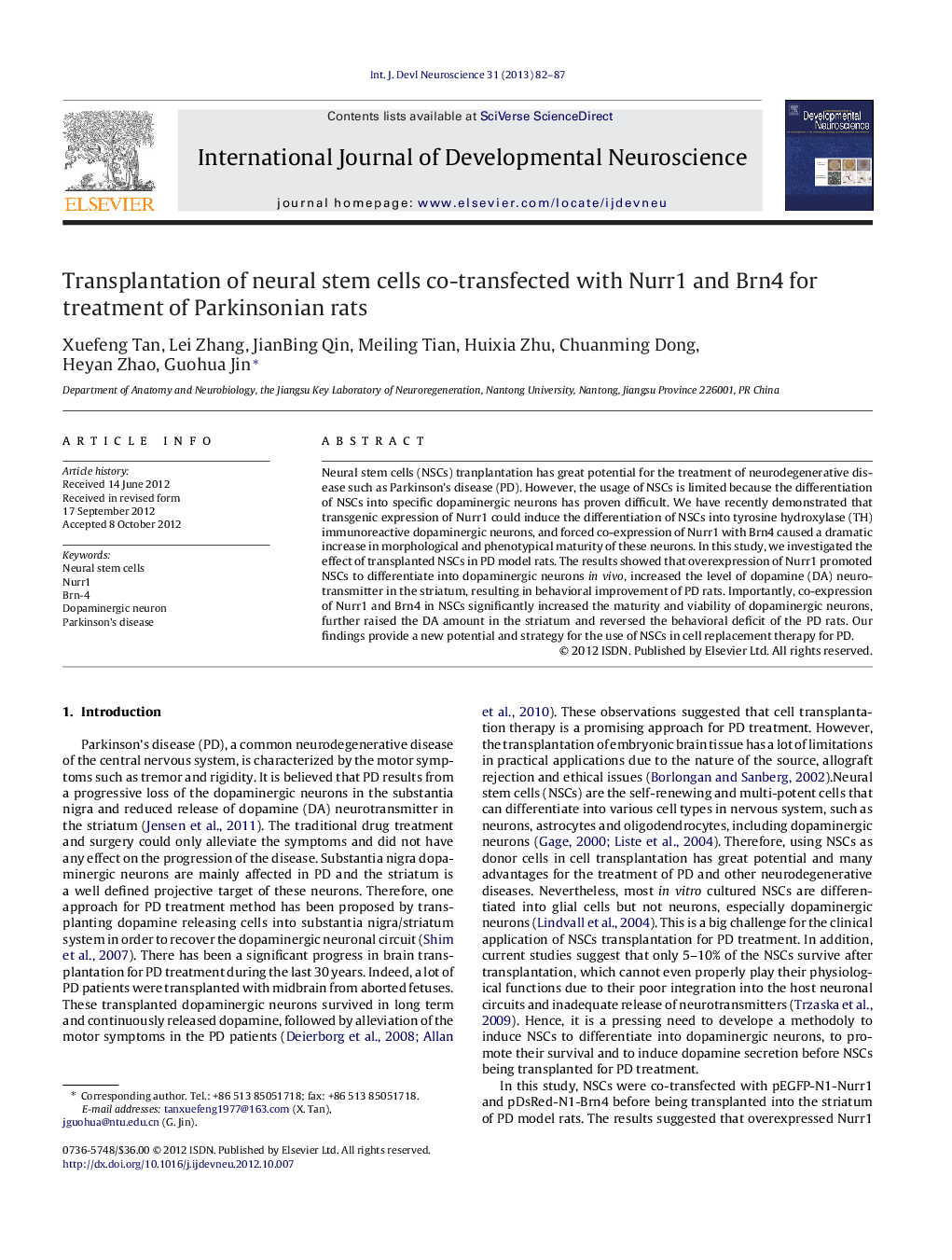| Article ID | Journal | Published Year | Pages | File Type |
|---|---|---|---|---|
| 2786190 | International Journal of Developmental Neuroscience | 2013 | 6 Pages |
Neural stem cells (NSCs) tranplantation has great potential for the treatment of neurodegenerative disease such as Parkinson's disease (PD). However, the usage of NSCs is limited because the differentiation of NSCs into specific dopaminergic neurons has proven difficult. We have recently demonstrated that transgenic expression of Nurr1 could induce the differentiation of NSCs into tyrosine hydroxylase (TH) immunoreactive dopaminergic neurons, and forced co-expression of Nurr1 with Brn4 caused a dramatic increase in morphological and phenotypical maturity of these neurons. In this study, we investigated the effect of transplanted NSCs in PD model rats. The results showed that overexpression of Nurr1 promoted NSCs to differentiate into dopaminergic neurons in vivo, increased the level of dopamine (DA) neurotransmitter in the striatum, resulting in behavioral improvement of PD rats. Importantly, co-expression of Nurr1 and Brn4 in NSCs significantly increased the maturity and viability of dopaminergic neurons, further raised the DA amount in the striatum and reversed the behavioral deficit of the PD rats. Our findings provide a new potential and strategy for the use of NSCs in cell replacement therapy for PD.
► NSCs grafted into the striatum of PD rats rarely differentiated into dopaminergic neurons. ► Nurr1 promoted the dopaminergic differentiation of NSCs and improved behavioral symptom of PD rats. ► Brn4 increased the maturity and viability of DA neurons, further improved the behavior of PD rats.
